Peugeot 308 review: family car’s blend of style and specification make it worth the wait
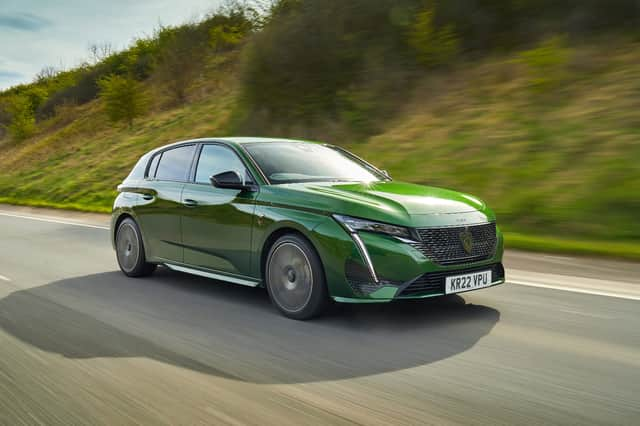

Peugeot’s new 308 won’t be appearing on our roads until the end of the year, but, judging by our early drive in both hatchback and estate versions, it’ll be well worth the wait.
The third-generation of the Peugeot 308 is the first to display the brand’s new roaring lion head logo – replacing the previous full animal – and it’ll have a plug-in hybrid option for the first time.
Advertisement
Hide AdAdvertisement
Hide AdIt’s a clear indication of the French maker’s ambitions to rebrand and move more upmarket in a bold future with four new models on the near horizon and the entire range having an electric element by 2025.
If the new 308, in hatch and SW estate version, is a sample of what’s coming, then we’re in for some treats.
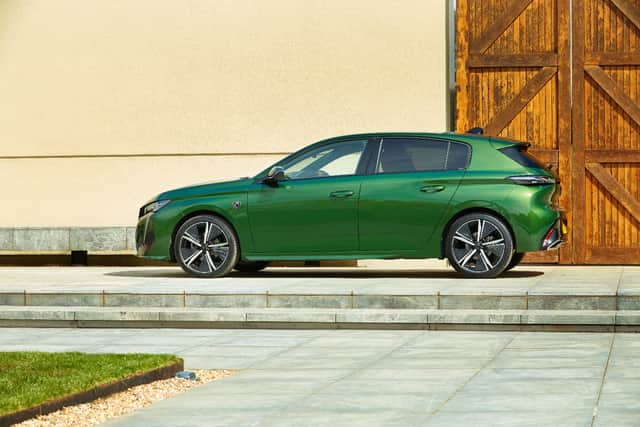

The designers have done a brilliant job in combining sharp angles with sweeping curves to create one of the best-looking new cars to emerge out of lockdown.
From the outside the car is a smart addition to the landscape, especially in the Olivine Green paintjob of the featured test car, one of seven dramatic colour options on offer.
Advertisement
Hide AdAdvertisement
Hide AdIt has flowing lines, with the bonnet swooping down to a low nose with a new, larger grille below. Ultra-slim headlights are incorporated at the sides of the grille, alongside the signature fang-like LED daytime running lights. The new logo in the centre of grille hides the radar sensor.
The rear view is pretty good too with a tidy, rounded Alfa-looking back end with a spoiler above the screen and dramatic three ‘claw’ LED tail lights.
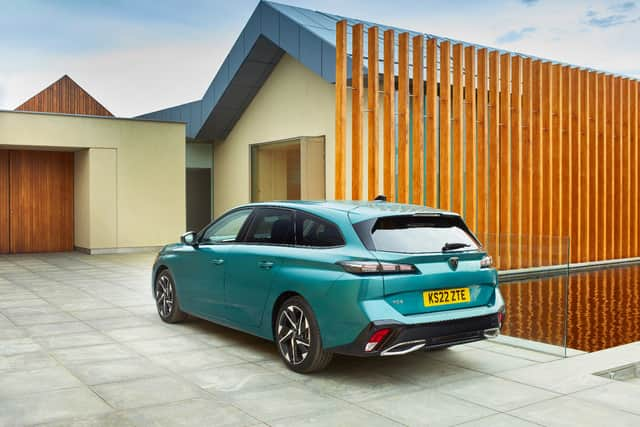

Step inside and there the view changes to a geometric one with pointed corners in a trapezoidal theme.
The result is a superbly stylish look across the width of the car’s dash, which oozes clean efficiency.
Advertisement
Hide AdAdvertisement
Hide AdFor the driver, the eye-level 10-inch digital instrument cluster gives clear information and in the case of the GT test car it’s a 3D display which could be over-complicated but is superbly crisp and concise.
It has several modes which can be configured and customised for the TomTom navigation, media sources, safety driving aids and energy flow.
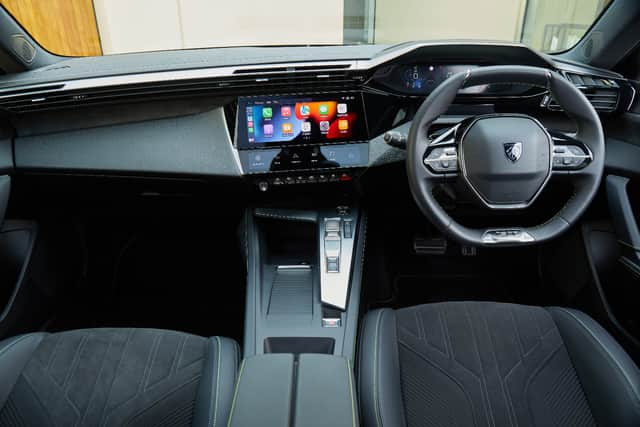

Central to it is the Peugeot trademark iCockpit with its small multi-function steering wheel, which includes sensors to detect the driver’s grip levels when using driving aids, and fingertip controls for the radio, media and phone.
The air vents are positioned high on the dash which means the central touchscreen, slightly lower than the digital cluster, is closer to the driver’s hand and eye line.
Advertisement
Hide AdAdvertisement
Hide AdThe upper grades come with configurable virtual i-toggles alongside the central screen which are touch-sensitive for a shortcut to various functions, including the air conditioning and phone contacts and to launch an app and avoid the need to scroll through a menu.
The voice command system uses speech recognition for hands-free access to many of the functions, although I struggled with the “OK Peugeot” command but that could have been down to the test car being one of the first to arrive from the factory, with the speedo set in kilometres an hour and the satnav directions in French.
The air conditioning constantly monitors the quality of air entering the cabin and the top models have an air treatment system that automatically filters out polluting gases and particles.
The design, technology and finish of the interior all come together for a superb working environment for the driver and, because it’s longer and lower than before, there’s more legroom for those in the back, too.
Advertisement
Hide AdAdvertisement
Hide AdThere are five trim levels and four power options - two plug-in hybrids, a 1.2-litre petrol engine – which was in the featured car - and a 1.5-litre diesel.
On the road, the car has a great stance and looks much more significant than the outgoing model and while the three-cylinder petrol engine in the test car was remarkably capable, it sounded surprisingly noisy at low speeds when extra oomph was called upon.
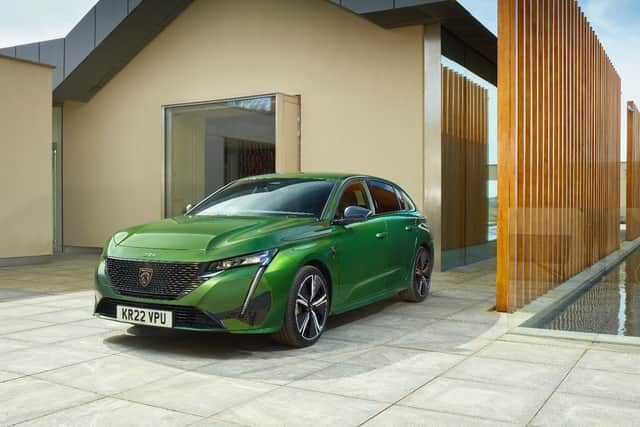

It felt fully confident on the road and the eight-speed auto box was a delight.
Aerodynamics have featured heavily in the design of the new car. All the bodywork like bumpers, body pillars, door mirrors, elongated roof spoiler and even the wheels have been styled for improved airflow.
Advertisement
Hide AdAdvertisement
Hide AdThe boot has a useful 412 litres of capacity, with 28 litres of storage in a hidden compartment beneath the floor. With the rear seats folded flat, that increases to 1,323 litres.
The SW model has more boot space - the standard model comes with a 608-litre boot, while the hybrid has 548 litres.
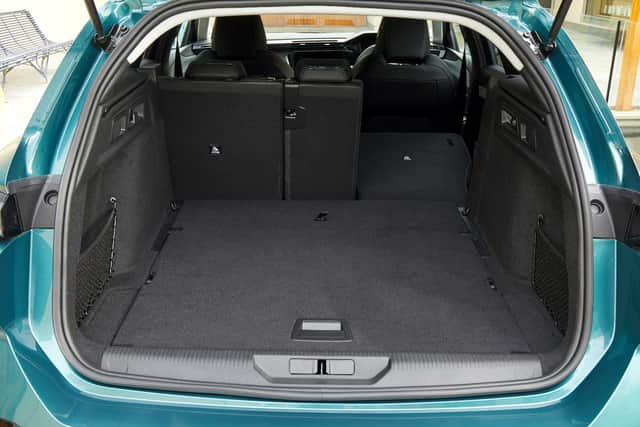

I drove a 1.5-litre four-cylinder diesel version of the estate with 129bhp and a useful 221lb ft of torque and while it was slightly slower off the mark than the 1.2-litre three-cylinder petrol GT hatch, there’s the bonus of impressive economy into the 60s mpg which makes it attractive as a big family workhorse.
There will be two plug-in hybrids, one combining a 148bhp PureTech petrol engine with a 109bhp electric motor and a 12.4kWh battery offering 37 miles of pure electric running. The other is larger with a 178bhp petrol engine with the same electric motor and battery range but slightly faster acceleration and top speed. Charging at home from a three-pin socket should take around seven hours while that time is halved with a wallbox. With the optional 7.4kW on-board charger that reduces even further to just under two hours. There should be a full electric version next year.
Advertisement
Hide AdAdvertisement
Hide AdThere’s a thermal pre-conditioning function available with the plug-in hybrids. Through the MyPeugeot smartphone app or the car’s touchscreen owners can schedule a wake-up time for the battery so the cells can be at the best temperature for efficiency from start-up, while the cabin can be pre-heated or cooled.
The new 308 is available to order from retailers and online with the first deliveries due around December.
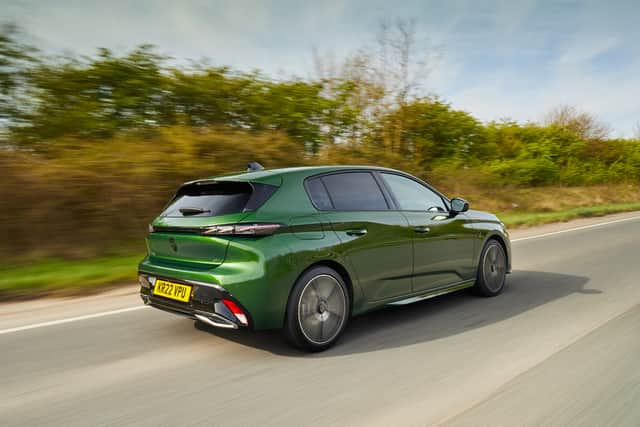

It’s a competitive area of the market with alternatives like the VW Golf, Ford Focus, Vauxhall Astra or the Seat Leon but 308 buyers will be attracted by excellent residual values when they come to trade-in their car or replace it on their PCP deal.
However, I suspect many will decide to hold onto their cars for a little bit longer. It’s a looker in either hatch or SW bodystyle both inside and out and has all the clever technology you need, so why would you want to change?
Peugeot 308 GT Puretech 130 Auto
Advertisement
Hide AdAdvertisement
Hide AdPrice: £29,920 (£30,620 as tested); Engine: 1.2-litre, three-cylinder, turbo, petrol; Power: 128bhp; Torque: 170lb ft; Transmission: Eight-speed automatic; Top speed: 130mph; 0-62 mph: 9.7 seconds Economy: 50mpg; CO2 emissions: 134 g/km
Comment Guidelines
National World encourages reader discussion on our stories. User feedback, insights and back-and-forth exchanges add a rich layer of context to reporting. Please review our Community Guidelines before commenting.